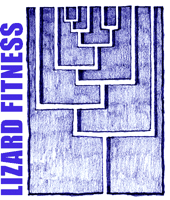Check out my profile on Research Gate and on Google Scholar or explore my full publication list below. Most papers are available online through the public repository at HAL CNRS
2025
Théo Bodineau; Pierre Villemereuil; Baptiste Lemaire; Simon Agostini; Beatriz Decencière; Matéo Millet; Sandrine Meylan; Jean-François Le Galliard
In: Functional Ecology, vol. n/a, no. n/a, 2025, ISSN: 1365-2435, (_eprint: https://onlinelibrary.wiley.com/doi/pdf/10.1111/1365-2435.70030).
Abstract | Links | BibTeX | Tags: ectotherm, food availability, nocturnal temperatures, performance, phenology, plasticity, reproductive costs, trade-off
@article{bodineau_multi-trait_2025,
title = {A multi-trait evaluation of patterns and fitness consequences of breeding phenology plasticity with nocturnal warming and food restriction in a lizard},
author = {Théo Bodineau and Pierre Villemereuil and Baptiste Lemaire and Simon Agostini and Beatriz Decencière and Matéo Millet and Sandrine Meylan and Jean-François Le Galliard},
url = {https://onlinelibrary.wiley.com/doi/abs/10.1111/1365-2435.70030},
doi = {10.1111/1365-2435.70030},
issn = {1365-2435},
year = {2025},
date = {2025-01-01},
urldate = {2025-03-20},
journal = {Functional Ecology},
volume = {n/a},
number = {n/a},
abstract = {Faced with climate warming, ectothermic species shift their breeding phenology, which is in part attributed to an acceleration of gestation or incubation in warmer environments. Thermal acceleration of gestation may have important fitness implications for breeding females and their offspring by impacting maternal homeostasis, embryonic development and hatching date, but these benefits and costs have been poorly documented. In addition, while climate change is characterised by a stronger trend for night-time than for daytime warming and concurrent alterations of food availability, few studies have quantified phenology-trait effects of increasing nocturnal temperatures and decreasing food intake. Here, we exposed female common lizards (Zootoca vivipara) to contrasted nocturnal temperatures and prey availability during gestation. We investigated multiple traits to quantify the functional impacts of nocturnal warming and food availability on breeding phenology, maternal condition, physiology and behaviour, current reproductive output and both females and offspring life-history traits. Nocturnal warming advanced parturition dates, but food restriction further accelerated gestation and females' muscle catabolism under moderate nocturnal warming. Nocturnal warming and food restriction during gestation had negative effects on reproductive output and increased physiological imbalances in breeding females. Hot nocturnal temperatures down-regulated basal corticosterone levels and immunocompetence, while food restriction reduced the antioxidant capacity of females. The thermal acceleration of gestation induced by nocturnal warming had positive effects on offspring life-history traits related to fitness, such as endurance at birth and body growth during the first few months of life. By analysing multiple traits, our study provides an integrated understanding of the intra- and intergenerational effects of nocturnal warming and resource availability during gestation in a viviparous ectotherm. Our results underline the importance of considering nocturnal warming and resource availability as factors causing increased physiological imbalances and negative effects on ectotherm reproduction. They also show the need to consider the benefits and costs of phenological advances for breeding females and their offspring in order to improve our understanding of the consequences of phenological changes in the context of climate change. Read the free Plain Language Summary for this article on the Journal blog.},
note = {_eprint: https://onlinelibrary.wiley.com/doi/pdf/10.1111/1365-2435.70030},
keywords = {ectotherm, food availability, nocturnal temperatures, performance, phenology, plasticity, reproductive costs, trade-off},
pubstate = {published},
tppubtype = {article}
}
2021
Alexis Rutschmann; Andréaz Dupoué; Donald B. Miles; Megía R. Palma; C Lauden; Murielle Richard; Arnaud Badiane; David Rozen‐Rechels; Mathieu Brevet; Pauline Blaimont; Sandrine Meylan; Jean Clobert; Jean-François Le Galliard
Intense nocturnal warming alters growth strategies, coloration, and parasite load in a diurnal lizard Journal Article
In: Journal of Animal Ecology, vol. 90, no. 8, pp. 1864-1877, 2021, ISSN: 1365-2656.
Abstract | Links | BibTeX | Tags: ectotherms, energetic balance, nocturnal temperatures, oxidative stress
@article{rutschmann_intense_2021,
title = {Intense nocturnal warming alters growth strategies, coloration, and parasite load in a diurnal lizard},
author = {Alexis Rutschmann and Andréaz Dupoué and Donald B. Miles and Megía R. Palma and C Lauden and Murielle Richard and Arnaud Badiane and David Rozen‐Rechels and Mathieu Brevet and Pauline Blaimont and Sandrine Meylan and Jean Clobert and Jean-François Le Galliard},
url = {https://besjournals.onlinelibrary.wiley.com/doi/abs/10.1111/1365-2656.13502},
doi = {https://doi.org/10.1111/1365-2656.13502},
issn = {1365-2656},
year = {2021},
date = {2021-01-01},
urldate = {2021-01-01},
journal = {Journal of Animal Ecology},
volume = {90},
number = {8},
pages = {1864-1877},
abstract = {1. In the past decades, nocturnal temperatures have been playing a disproportionate role in the global warming of the planet. Yet, they remain a neglected factor in studies assessing the impact of global warming on natural populations. 2. Here, we question whether an intense augmentation of nocturnal temperatures is beneficial or deleterious to ectotherms. Physiological performance is influenced by thermal conditions in ectotherms and an increase in temperature by only 2°C is sufficient to induce a disproportionate increase in metabolic expenditure. Warmer nights may expand ectotherms’ species thermal niche and open new opportunities for prolonged activities and improve foraging efficiency. However, increased activity may also have deleterious effects on energy balance if exposure to warmer nights reduces resting periods and elevates resting metabolic rate. 3. We assessed whether warmer nights affected an individual’s growth, dorsal skin colouration, thermoregulation behaviour, oxidative stress status and parasite load by exposing yearling common lizards (Zootoca vivipara) from four populations to either ambient or high nocturnal temperatures for approximately five weeks. 4. Warmer nocturnal temperatures increased the prevalence of ectoparasitic infestation and altered allocation of resources toward structural growth rather than storage. We found no change in markers for oxidative stress. The thermal treatment did not influence thermal preferences, but influenced dorsal skin brightness and luminance, in line with a predicted acclimation response in colder environments to enhance heat gain from solar radiation. 5. Altogether, our results highlight the importance of considering nocturnal warming as an independent factor affecting ectotherms life-history in the context of global climate change.},
keywords = {ectotherms, energetic balance, nocturnal temperatures, oxidative stress},
pubstate = {published},
tppubtype = {article}
}
